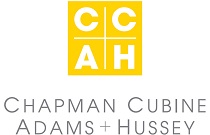
Keeping Up the Inspiration and Momentum From the Bridge Conference
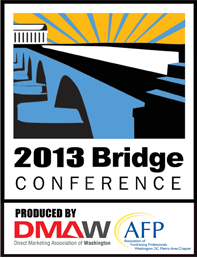 It happens time and time again in the conference cycle. You go to a leading industry conference, like the Bridge to Integrated Marketing and Fundraising Conference, and get a bundle of great ideas to fire up your fundraising program. Perhaps you go back to the office and share ideas, which is great. But how many times do those great ideas just fizzle out and never get tested or implemented?
It happens time and time again in the conference cycle. You go to a leading industry conference, like the Bridge to Integrated Marketing and Fundraising Conference, and get a bundle of great ideas to fire up your fundraising program. Perhaps you go back to the office and share ideas, which is great. But how many times do those great ideas just fizzle out and never get tested or implemented?
Let’s try to keep that from happening this time! Much of the conference content this year focused on data and infrastructure, content strategy and testing, sustaining donors, and integration. What takeaways do you have from Bridge this year? Please question and comment on your Bridge 2013 experience and any actionable strategies you plan to implement this year. Here are a few ideas to get you started:
Data & Infrastructure
In todays’ integrated landscape, data organization and campaign attribution are as important as ever! The “keeper” of data across organizations is shifting from an information technology (IT) function to marketing teams. How has your organization been tackling data in this multi-channel market?
Data plays an important role in audience segmentation, campaign performance and attribution. Here are some key factors:
- Use consistent audience segmentation, factoring giving in all channels
- Ask for the right amount by combining donation data and building ask strings on data from every channel
- Craft your messaging strategy based on recent campaign response
Content Strategy and Optimization
Not only does a multi-channel approach help reinforce your messaging and boost results, but it also offers more opportunities for testing and applying your learnings across channels. Online campaigns generate results much faster than direct mail campaigns; however, many clients have a much larger direct mail quantity, affording opportunities for more comprehensive, simultaneous testing. Use test results from one channel to inform strategies in other channels.
Some specific takeaways in content strategy, testing and optimization include:
- Incorporate a tailored conversion series for different segments based on how they join your file — eNews subscriber versus event participant versus donor. With the donor segment, instead of an additional one-time donation ask in the welcome series, ask for a monthly donation.
- When quantity allows, use many test panels to see small successes warranting further testing.
- Always keeps your direct mail or digital campaign imagery on rotation on the home page.
- Create sample personas based on the type of people coming to your site to help guide website content strategy (e.g., donor, grant researcher, program participant). This can be especially helpful to maintain your web content after a redesign. (For example, if your executive director thinks a donor testimony should be on the home page, you can point to your three personas and ask “Which, if any, of these people would want to read that?”).
How Integration Can Boost Your Year-End Campaigns
Now is the time to begin your planning for year end. If you’re just dipping your toe into the waters of cross-channel marketing, this year-end is a great opportunity to take it to the next level! From coordinating your digital efforts with direct mail to presenting a consistent message across your website, social media presences and email, consider these tips for success in end-of-year campa:
- Add a sense of urgency across all channels to drive higher response rates and average gifts. Test higher ask strings, use financial goals ($10,000 in 10 days!), and reinforce what you’ve accomplished this year and the work that lies ahead in 2014.
- Include social media in your campaigns — use Facebook custom audience targeting in tandem with direct mail and email. You can also use your social channels as an opportunity to engage and thank your donors with a short video showing people how their gifts have helped over the last year.
- Coordinate all channels to focus on end-of-year messaging, ramping up the sense of urgency in the last two weeks of the year. As the days go by, change up your home page with hot buttons or a progress bar to illustrate how close you are to reaching your goal. Use of a light box or home page takeover can draw your donors’ attention, prompting them to make that gift!
- Promote “Giving Tuesday” — the first Tuesday after Thanksgiving, which launches the holiday charitable giving season — to your advocates and supporters. Even if they’re not able to support you this year, ask them to share your appeals through email and social media.
- Use Ecards to balance cultivation and solicitations. They’re a great way to vary your email communications, offering your donors a chance to engage and share your message with their network.
What were some of your best takeaways from the Bridge conference this year? Please share your questions or ideas below, and we can keep the conversation going!
Share, Like and Post | | Article Link | CommentA Few Small Changes Deliver a Big Return
This article was written by guest blogger Brock Warner. Brock is a fundraiser for War Child Canada & US, as well as a TEDx speaker on philanthropy, a blogger, and volunteer with the AFP Greater Toronto Area chapter.
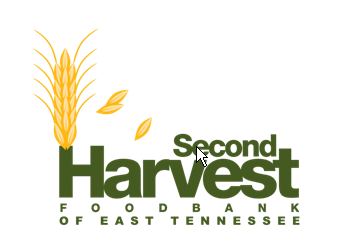 “Match Day” appeals are a proven motivator in the fundraising world, providing an attractive offer that can pull even some of the most reluctant lapsed donors back into the annual giving stream. But even campaigns that have been successful in the past have room to improve. In fact, most charities can’t rely on a campaign’s success from one year to the next.
“Match Day” appeals are a proven motivator in the fundraising world, providing an attractive offer that can pull even some of the most reluctant lapsed donors back into the annual giving stream. But even campaigns that have been successful in the past have room to improve. In fact, most charities can’t rely on a campaign’s success from one year to the next.
The Second Harvest Food Bank (SHFB) of East Tennessee understood that in 2012 their Match Day had to be the best yet. Their community depends on it. SHFB of East Tennessee is the region’s largest hunger-relief charity, and the demand for services does not cease. Local businesses were ready to match the support of their community, which put the pressure on the SHFB team to deliver the message in as effective a manner as possible.
To get the extra fundraising boost, the team invested in software and outside support that would assist in the delivery of the campaign, and in record time -- approximately two months -- the team at SHFB of East Tennessee was prepared to launch with an impressive integrated marketing strategy that included:
- A custom, branded web portal new to this campaign
- A teaser postcard had been mailed in advance of the day as a reminder
- Three emails ready to be sent on the day of the campaign
- Social media content prepared and at the ready
- Local media (primarily radio) was on board to spread the word
As you would expect, the results were remarkable. Considerably more was raised this year than in previous years. Here are some highlights:
- $28,000 was raised from the emails alone
- $150,000 online, from what were previously considered “off-line” donors
- 16% open rate for the emails
- $2.90 revenue per email address
- $107 average gift
- $26,000 through new sources: radio, social media, etc.
Kudos to SHFB of East Tennessee! A job well done, for a great cause, and to their agency partner Amergent as well.
Share, Like and Post | | Article Link | CommentEmail and Phone: Friends or Foes?
This article was written by guest author Jamie Natelson, Vice President, Avalon.
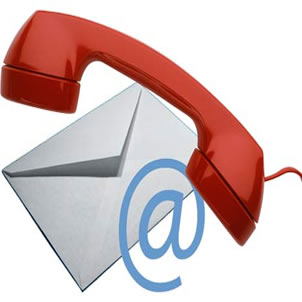 I hear it all over the industry and from a few of my clients: why can’t we do that by email? The drums have been beating for nearly a decade about the new frontier. What I say to them is yes, you should have a healthy digital marketing campaign, but you need to keep your toes in every channel if you want to raise money … and that includes telemarketing.
I hear it all over the industry and from a few of my clients: why can’t we do that by email? The drums have been beating for nearly a decade about the new frontier. What I say to them is yes, you should have a healthy digital marketing campaign, but you need to keep your toes in every channel if you want to raise money … and that includes telemarketing.
First of all, telemarketing works. Contacting your donors by phone improves overall donor value. Even if they do not make a pledge, they are more likely to give your next appeal ― mail or email — a second look. When you engage a donor directly, you can start a conversation, educate them about the program, overcome misconceptions ― and in most cases (really!) leave them with a better feeling about the organization and the work that it does.
Digital efforts and telemarketing efforts increase donor value — together this value is higher. So, I ask you … why wouldn’t you integrate them? Here are some ways to do so:
- Send donors an email outlining your sustainer program and its benefits (remember the pre-call postcards; this is cheaper and easier by email), tell them to expect a phone call, and follow up with a conversation to answer any questions and close the deal. You can also send a follow-up email to hedges or to invite those you could not reach to your monthly giving program.
- In fact, you can do this email/phone hit on an appeal, a renewal or an online activist conversion program to great success. If you don’t believe me – test it.
- Another way to get the most out of the phone/email combination is to create a landing page for every telemarketing campaign. Make sure it is something simple to remember (\renew or \call). Share this with your callers so they have another trusted place to tell contacts about during the call.
- Use email as the first line to collect fulfillment. Cost can vary with firms, but this is an easy way to save on printing and postage costs — and it is an email gathering device.
- While you have them on the phone, why not do some list building? Sadly, most asks are just give us your email and we will send you updates. If you can, think of a more creative way or something that you can send them that will make them want to give you that email. That personal ask on the phone goes a long way.
- Also, you can use the phone effectively to convert your online activists and petition signers to donors.
You have heard it before: test, test again, and then test some more. Each organization is different, and you need to find the cadence, balance, timing, etc. of what works for you.
The important thing is to be creative in how you use all channels, and remember that integration always strengthens each channel and improves donor value.
So, what are you waiting for? Make a call, send an email or consider both!
Share, Like and Post | | Article Link | CommentUsing Online Communities to Empower Integrated Marketing
This article was written by guest author Michael Wilson. Michael is the CEO and Founder of Small World Labs, an online community platform provider focused on the nonprofit industry.
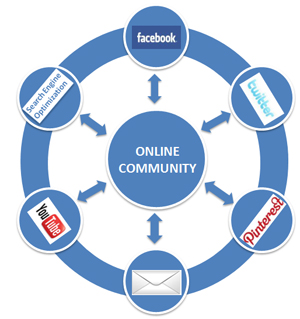 As an integrated marketer, if you had access to a tool that: 1.) gave you more data about your constituents, 2.) increased their engagement level, 3.) led them to donate more, and 4.) helped them to become more involved in supporting your organization, would you be interested? That's a rhetorical question, because of course you would. However, only a small portion of nonprofit organizations are currently using online communities to achieve these results.
As an integrated marketer, if you had access to a tool that: 1.) gave you more data about your constituents, 2.) increased their engagement level, 3.) led them to donate more, and 4.) helped them to become more involved in supporting your organization, would you be interested? That's a rhetorical question, because of course you would. However, only a small portion of nonprofit organizations are currently using online communities to achieve these results.
What is an Online Community?
To set the stage, I'll clarify what I mean by the term "Online Community." An online community is an area that exists under your organization's web environment, either integrated into its main website, or as a separate microsite. In this regard, it is different from your organization's accounts on social media sites, which are located elsewhere.
An online community creates a central home for your online supporters to engage more deeply with your organization. It gives them the ability to connect with others, collaborate on a broad set of initiatives, share ideas and best practices, find and sign up for opportunities, and get involved with your organization online.
How Does an Online Community Empower Integrated Marketing?
An online community fills the integration gap between direct marketing mailings, email sends, and awareness generating posts on social media sites. When integrated with your existing signup process, users are immediately presented with options to share, collaborate, and contribute. The specific methods for sharing, collaborating, and contributing vary from organization to organization, but can include things like sharing event fundraising ideas, responding to recommended volunteer opportunities, and/or collaborating with their local affiliate.
In an earlier blog post, Stephen Ferrando wrote about the importance to "Study and use the data." A great aspect of online communities is their ability to track everything that is happening with a user. Whether a user has asked a particular question, joined a local group, responded to a topic discussion, or updated their profile information, all of this information is tracked. When integrated with your CRM (which we always recommend doing) all of this information helps provide you with current information and a broader 360-degree view of each person.
Has your organization been thinking about Big Data? Online communities can track over 100 different actions and updates for each member. All of this data is available for your teams to analyze, model, and segment to improve its programs and initiatives.
What are the Basic Tenets of Successful Online Communities?
I could go on and on in this area (and often do so), but here are some basics for creating a successful online community:
- Integrated – Integrate your online community with the rest of your online environment. Create a seamless user experience by utilizing single sign on (SSO) and parallel template styling. Tie into your existing CRM so all of the community data also pushes there next to everything else you are tracking.
- Targeted – Resist the urge to create one general space for everyone. Not all of your supporters are the same, nor do they want to interact with you in the same way. Communities that are targeted to volunteers, major donors, advocates, event participants, or other key segments tend to be more relevant and engaging to the user.
- Supported – Encourage staff to use the community as a primary vehicle to reach supporters. This is a basic, but often overlooked, concept that will lead to better engagement. Don’t create your community solely for your audience. Furthermore, look for opportunities to use your community to improve existing interactive workflows and make employees more productive.
 How Does an Online Community Drive Results?
How Does an Online Community Drive Results?
Online communities provide new opportunities for supporters to interact with your organization and with each other. At Small World Labs, we've found that this increased engagement leads directly to improved KPI outcomes for the organization. More specifically, we've found that a member of a nonprofit's online community tends to:
- Contribute 437% more dollars per year
- Upgrade paid membership levels 73% more often
- Volunteer 228% more hours
- Spend 300-900% more time on your website
- Share content to social networks 115% more often
At a time when nonprofits are often struggling to make ends meet, these results have a significant impact to their bottom line.
Where is your organization in the process of including online communities in its integrated marketing efforts? Let us know in the comments below.
The Elusive "Social" Silver Bullet for Fundraising
This article was written by guest author Angela Struebing, Agency Directory, CDR Fundraising Group.
 I attended NTEN’s NTC earlier this year, and was excited that there were several sessions on social media. I thought: Finally, someone had cracked the code to fundraising through social media and now they were willing to share the secret!
I attended NTEN’s NTC earlier this year, and was excited that there were several sessions on social media. I thought: Finally, someone had cracked the code to fundraising through social media and now they were willing to share the secret!
We Heart Social Data: But What Do We Do With It?
I started with “We Heart Social Data: But What Do We Do With It?” The first half of the session discussed segments within the social audience. Blackbaud uses four categories based on a social score: standard consumer (49%), multi-channel consumer (45%), engager (5%) and key influencers (1%). The percentages in parentheses show the make-up of a typical nonprofit organization. According to Blackbaud, knowing the social score of each of your constituents and which category they fit into is important, because once you understand their level of participation in social media, you can develop plans to proactively engage them in your fundraising campaigns, not only through social media, but through other channels as well. It reinforced the importance of having a CRM system that can handle the amount of data surrounding social media and then using that information to influence other channels.
What I got from the second half is that LinkedIn is an underused social network, and there is lots of valuable data, ripe for a fundraiser’s picking. For example, you can look up members’ job titles to get an idea of their giving potential. You can peer into a person’s professional circle. They also found that members with the highest LTV were active on LinkedIn.
ROI and Metrics
The second social media session I attended was entitled “ROI and Metrics. ” It sounded promising in that there was something to actually measure. The presenters ran through a few tools you can use to track your social media activity (Bitly, Button, Fundly, Razoo, mGive, Twtrland), touted the success Obama had on Facebook, and shared a few interesting statistics. Did you know only 20% of your fans actually see your messages? Or that the half-life of your social updates is 3-5 hours? Or that you only have about a half a second to catch someone’s attention in your newsfeed? But again, it didn’t seem like there was widespread success or even best practices coming out of the nonprofit sector for fundraising on social media.
The Real Housewives of Social Media
The last session of the conference was standing room only, “The Real Housewives of Social Media.” If the National Wildlife Federation, AARP, American Red Cross and Humane Society can’t figure it out, then what is everyone else to do? The session was extremely entertaining, but the presentation focused more on cultivating relationships through social media rather actually raising money. The takeaway was that you need a clear communications policy (including what to say, how quickly and in what voice) for using social media in order to take advantage of those relationships in other channels.
My Take on Fundraising and Social Media
From my own experience, I know that fundraising on Facebook is still in its infancy. Organizations are starting to have success with “custom audience” targeting, but that was just introduced a little over six months ago. In order to truly measure its effectiveness, we need to be able to track lift in other channels (email, mail and phone) from people who saw ads on Facebook.
And what about Twitter or Pinterest? No one is talking about raising money from these sites because it’s not working…yet.
The bottom line is that you can’t ignore social marketing just because it’s not directly making you money right now. You have to use social media to cultivate and engage your audience and then use that information to convert them through other channels such as email, direct mail and phone. You need to have a strong data capture infrastructure in place to collect and process the wealth of information available through social media. And, you need to begin coordinating your channels now so that the messages constituents see across mediums are consistent.
Share, Like and Post | | Article Link | Comment





